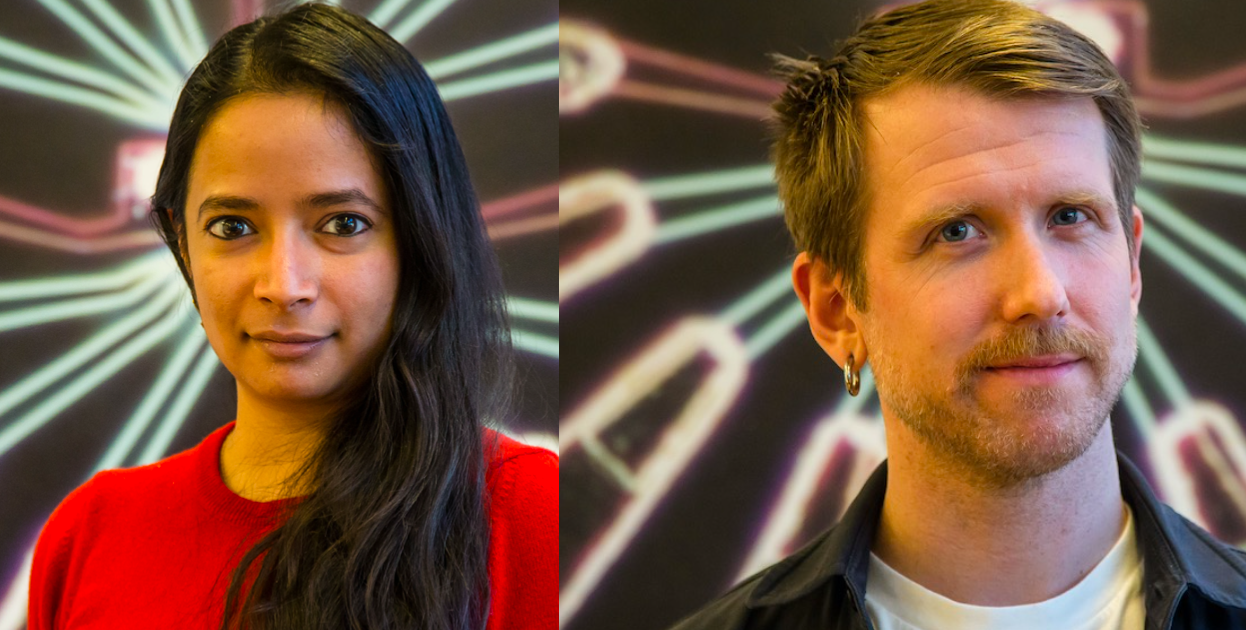Anasua Chatterjee and Morten Kjærgaard from QDev are on Berlingske’s Talent 100 list
Assistant Professor Anasua Chatterjee and Assistant Professor Morten Kjærgaard from the Center of Excellence QDev at the University of Copenhagen are on Berlingske’s Talent 100 list. Assistant Professor Chatterjee is a physicist from Princeton University who came to Denmark to build the future quantum computers. Assistant Professor Kjærgaard recently received a grant for his research that explores quantum computational power with superconducting quantum bits.

Photo: Ola J. Joensen, Niels Bohr Institutet
Assistant Professor Anasua Chatterjee and Asssistant Professor Morten Kjærgaard from the Center of Excellence QDev at the University of Copenhagen are on this year’s Berlingske’s Talent 100 list. Assistant Professor Chatterjee is a physicist from Princeton University who came to Denmark to build the future quantum computers. Assistant Professor Morten Kjærgaard recently received a grant for his research that explores quantum computational power with superconducting quantum bits.
This is the 17th time that Berlingske has created a Talent 100 list. Every year the newspaper chooses the best and most ambitious young people. In 2021, almost 400 were nominated before the list was narrowed down to 100. The list will be posted online along with portraits.
The future quantum researchers
Almost 100 years have passed since Niels Bohr won the Nobel Prize, but his research is still so current that that was why Assistant Professor Chatterjee came to Denmark.
“We are lucky that a big talent like her decided to come to Copenhagen. We can thank Niels Bohr for this,” said Professor Anja C. Andersen from the Niels Bohr Institute at the University of Copenhagen.
Assistant Professor Kjærgaard ’s Young Investigator grant was given to him to carry out his new project, which will use superconducting quantum bits to study fundamental questions related to efficient generation of so-called “entanglement,” as well as small-scale quantum fault tolerance, and novel quantum algorithms
“The only thing we know today about the new research, which will provide for our basic existence in 20 years’ time, is that it is to a large extent made in the heads of talented, young researchers. That’s why it is so important to give young researchers a firm basis to create their very own profile in research,” said Thomas Bjørnholm, director of science at the Villum Foundation.
You can read Anasua Chatterjee’s portrait here
You can read more about Morten Kjærgaard and his current project here
